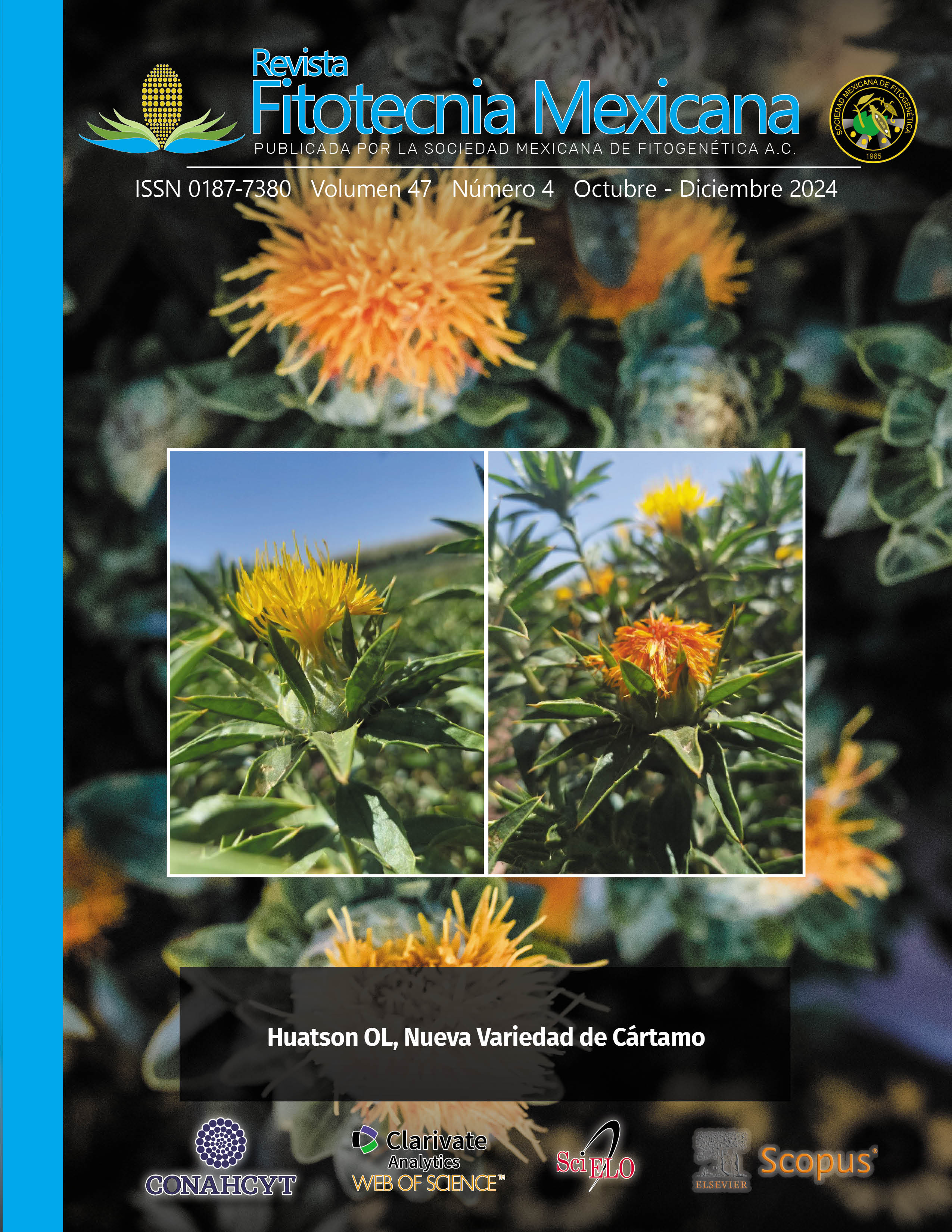PRODUCTION AND MOLECULAR CHARACTERIZATION OF INTERGENERIC Pleurotus ostreatus × Lentinula edodes HYBRIDS BY MATING OF COMPATIBLE NEOHAPLONTS
Main Article Content
Abstract
Mushroom cultivation of Pleurotus and Lentinula genera has increased in Mexico. The use of germplasm with the best phenotypes is important for commercial production; thus, genetic improvement programs are required. Production of intergeneric hybrids is restricted by compatibility barriers; however, the monokaryotic components obtained by chemical dedikaryotization (neohaplonts) can be mated to produce intergeneric hybrids Pleurotus × Lentinula. Neohaplonts were recovered from strains of Pleurotus ostreatus and Lentinula edodes, which mated to generate 12 intergeneric hybrids. The phenotype of all hybrids was Pleurotus, with biological efficiencies between 26.72 and 96.55 %. Two hybrid, parental and neohaplont strains were selected for molecular characterization using 7 ISSR markers. The average total of bands was 16.29, with a polymorphism of 91.31 %. Other parameters calculated were PIC with a value of 0.37, MI of 2.94, and RP of 9.51. The dendrogram, constructed from the binary matrix, indicated that the Lentinula strains were grouped separately from the Pleurotus strains and intergeneric hybrids, which suggests a closer genetic similarity between the hybrids and the Pleurotus strains.

